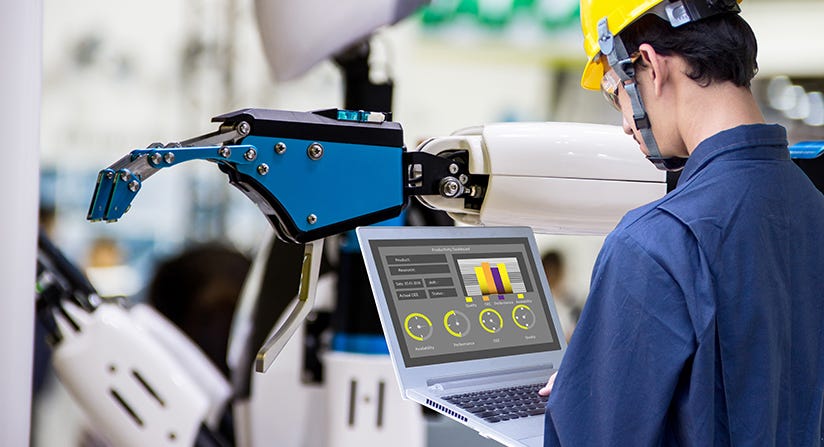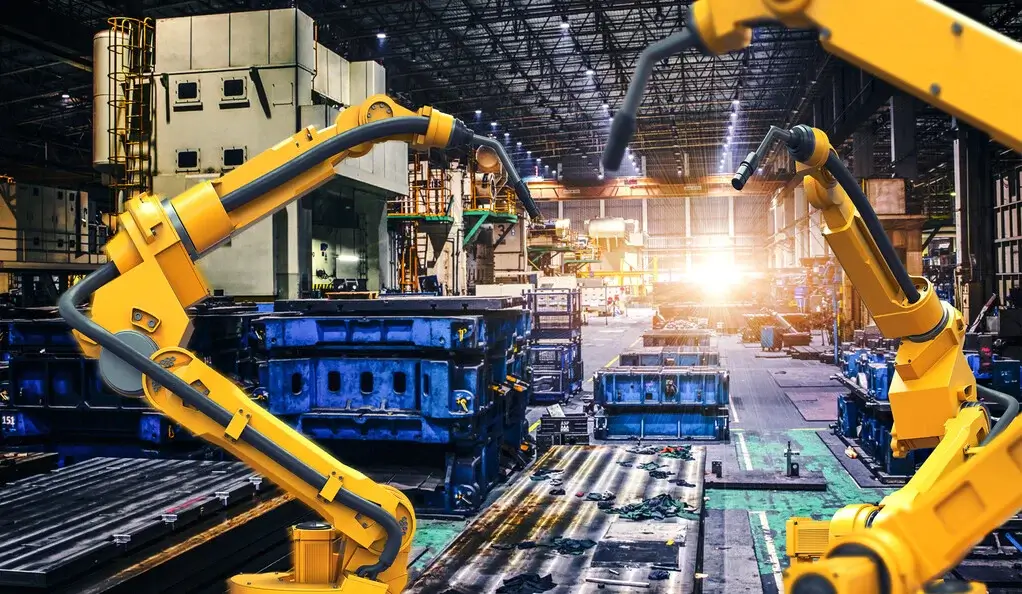What is CIM (Computer-Integrated Manufacturing)? 3 Ways to Optimize CIM
CIM is a manufacturing approach that provides a complete manufacturing facility automation. All the operations are controlled by computers and have a common storage and distribution.
The various processes involved in a CIM are listed as follows:
- Computer-aided design (CAD)
- Prototype manufacturing
- Determining the efficient method for manufacturing by calculating the costs and considering the production methods, volume of products, storage and distribution
- Ordering of the necessary materials needed for the manufacturing process
- Computer-aided manufacturing of the products with the help of computer numerical controllers
- Quality controls at each phase of the development
- Product assembly with the help of robots
- Quality check and automated storage
- Automatic distribution of products from the storage areas to awaiting lorries/trucks
- Automatic updating of logs, financial data and bills in the computer system

Key Components of CIM
CIM Hardware
- Manufacturing equipment: This includes CNC machines (Computer Numerical Control), robots, automated assembly lines, and material handling systems. These technologies automate repetitive tasks, improve precision, and increase production speed.
- Sensors and data collection devices: These devices gather real-time data on machine performance, production rates, and quality metrics, enabling manufacturers to monitor and optimize processes.
- Computers and workstations: Essential for running CIM software applications, these devices process data, execute commands, and facilitate communication between different components of the CIM system.
Phần mềm CIM
- CAD/CAM Systems: Used for product design and manufacturing process planning. CAD software allows engineers to create detailed 3D models of products, while CAM software generates tool paths and instructions for CNC machines.
- Manufacturing Execution Systems (MES): MES software manages production schedules, tracks work orders, and monitors real-time production data. It ensures that manufacturing processes adhere to predefined quality standards and deadlines.
- Enterprise Resource Planning (ERP): ERP systems integrate CIM with other business functions such as finance, procurement, and customer relationship management (CRM). They provide a centralized platform for managing resources, optimizing supply chains, and improving overall organizational efficiency.
- Simulation and modeling tools: These tools simulate manufacturing processes, predict outcomes, and optimize production workflows. They enable manufacturers to test different scenarios, identify potential bottlenecks, and make informed decisions before implementing changes on the shop floor.
Benefits of Computer-Integrated Manufacturing
- Time-efficiency: A fully automated system can operate much faster and work 24/7 if required.
- Accuracy: Adoption of a computer integrated manufacturing (CIM) system allows to achieve a higher accuracy level. Implementing technology into your manufacturing process allows you to achieve near-perfect precision levels in production as well as quality control.
- Repeatability: Automated computer integrated manufacturing systems are highly efficient when it comes to monotonous tasks. Such a system speeds up production time and cuts down the production cost on many levels. For instance, there is no need to train or retrain staff.
- Reduced costs: With the help of computer-integrated manufacturing technology, you can reduce labor costs and lower the amount of waste (as there is less of a chance for mistake or deviation from the standard, so the overall quality of the product gets better).

Challenges of Computer-Integrated Manufacturing
Computers are prone to damage, especially in an industrial setting. The knock-on effects of computer failure, for an enterprise that relies solely on computers remaining operational, can be catastrophic and result in:
- Extended periods of downtime
- Idle staff
- Reduced production
- Increased lead times
- Customer dissatisfaction
- Reputational damage
- Loss of market share
Another key challenge facing CIM is a skills shortage. Many manufacturing firms are lacking skilled-technicians able to operate those systems crucial to CIM. In some quarters, CIM has been slammed for causing jobs losses. In fact, it creates more jobs, but there’s a lack of skills among the current manufacturing workforce, which makes things slightly complicated.
CIM Use Cases & Technologies
The expertise required to develop a computer integrated manufacturing (CIM) system is very versatile. However, especially important are the ones related to data collection, processing, and storage - namely IoT, big data, and cloud. These technologies are integral to more complex ones, such as robotics, computer vision, and others.
Robotics
The merge of IoT and robotics allows manufacturers to automate production lines or simple repetitive processes, closely monitor complex procedures, analyze performance, and understand the ground for optimization.
With the help of industrial IoT, 3D printing, and robotics itself, you can boost the quality and consistency of the production process, as well as the final product. Also, IoT enables real-life condition monitoring of your machines and their predictive maintenance. So, you will be able to decrease machine downtime.

Computer vision
The application of computer vision (CV) in the manufacturing industry is almost limitless. So, let’s view some of the key examples of how computer vision and ML can optimize processes, boost productivity, and grow revenue:
- Vision-guided robots: CV systems are widely used for tool and detail positioning on the production lines. The system identifies the location of an object and sends these coordinates to the robot.
- Anomaly detection: In this case, CV can analyze new images and compare them to an already existing dataset to find anomalies and prevent potentially dangerous situations on production lines and manufacturing sites.
- Defect reduction: Typically, a large number of items need to be inspected on a production line. Computer vision can help you automate this process. A complex CV solution can scan the item from several angles and match it to the acceptance criteria. Also, it can save the accompanying metadata. When there is a certain number of faulty items, the system can inform the manager or even halt the production for further inspection to be performed.
Big data
Big data and Artificial Intelligence (AI) allow you to identify patterns in the great piles of data, so you can foresee when a specific machine might fail. Thus, it gets easier to solve the issue and cut operational maintenance costs even by half. Also, big data and AI can help you with predictive maintenance.
3 Ways to Adopt CIM Effectively
Establish clear business KPIs & calculate ROI
It is critical to set clear KPI’s and evaluate ROI. If you need to validate the profitability of your business, you can undertake a Discovery Phase. Based on calculations for different scenarios, you can understand the advantages of implementing computer integrated manufacturing. The Product Discovery phase provides all the deliverables required to kick off the implementation phase efficiently while addressing risks and optimizing costs.
Analyze manufacturing problems
It is critical to get more visibility into your manufacturing issues and requirements. You need to analyze your final product's quality and how it can be enhanced. Then, you have to consider all the advantages and disadvantages of computer-integrated manufacturing. Also, it would be best if you understood how the quality improvement process can be boosted by computer-integrated manufacturing technology.
Ensure an efficient CIM engineering process
You have to keep in mind that the success of any computer integrated manufacturing (CIM) project heavily depends on the following aspects:
- Finding top-notch specialists that will assist you on this path
- Allocating IoT sensors that collect data from different devices
- Developing an ecosystem of platforms that collect data from different sources
